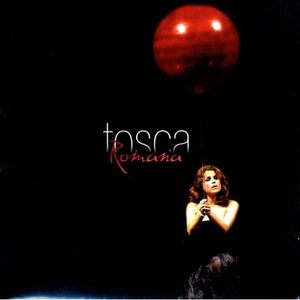Richard Dorfmeister and Rupert Huber first met in school, and began experimenting with tape machines, Indian music, and poetry lyrics, under the name of Dehli9. After school, Dorfmeister and Huber went their separate ways: Dorfmeister began producing and DJing with Peter Kruder, and Huber worked in the experimental music scene. His compositions were featured by Wiener Festwochen (Private Exile, 2004), Centre Pompidou (Sonic Process, 2002) and Ars Electronica (Radiotopia, 2002) as well as in TV series (C.S.I.: Miami, Sex and the City) and radio (signations for the ORF – Austrian Broadcasting Company).
In 1994, Dorfmeister and Huber released their first 12", entitled "Chocolate Elvis", on Kruder and Dorfmeister's G-Stone label. A string of critically acclaimed albums and remix collections followed - Opera (1996), Suzuki (1999), Dehli9 (2002) J.A.C. (2005) and No Hassle (2009) are considered milestones of the downtempo genre. The musical trademark of Tosca is a cheerful laid-back feel that emanate a warm, and occasionally melancholic atmosphere. The music of Tosca is played in clubs and living rooms, boutiques and wineries alike.
Lots of the singles and their ensuing remixes were released as remix albums - i.e. Souvenirs - The J.A.C. Remixes, Suzuki in Dub, Chocolate Elvis Dubs or the “Fuck Dub” remix collection - and featured on countless compilations. Tosca has performed in live shows in the USA, South America and Europe, including such prominent festivals as Coachella (Palm Springs, USA) and the Ars Electronica Festival (Linz, Austria). In 2001, Tosca was honored with Austria’s Amadeus Music Award as best Pop/Rock group. In 2009 the release of No Hassle saw Tosca move into more ambient soundscapes and the world of live instrumentation. In 2013 their sixth studio album Odeon featuring vocalists Sarah Callier, Rodney Hunter and JJ Jones was released on their longtime home of !K7 Records.
La Luna
Tosca Lyrics
Jump to: Overall Meaning ↴ Line by Line Meaning ↴
È la luna
Luna
È vicina
Luna, la luna risorta
La luna deserta
La luna è bianca
La luna marina
La luna bambina
La luna bastarda
La luna assassina
E non c′è nessuno
E non c'è nessuno
Perché?
Perché?
Perché?
Perché?
The lyrics of Tosca's song "La Luna" capture the essence of the moon - its different moods and characteristics. The repetition of the phrase "È la luna" (meaning "It's the moon") emphasizes the importance of this celestial body in the singer's narrative. The song highlights various facets of the moon - from being "risorta" (risen) to "deserta" (deserted), "bianca" (white), and "stanca" (tired). The moon is also portrayed as "marina" (maritime), "bambina" (childlike), "bastarda" (bastardized), and "assassina" (murderous), indicating its complex and multifaceted identity.
The singer then poses a series of questions - "Perché?" (meaning "Why?") which indicates a sense of wonder, questioning, and awe. The repeated questioning emphasizes the mystery and the enigma that surrounds the moon, capturing the wistful and contemplative mood.
Overall, Tosca's "La Luna" offers a glimpse into the different facets of the moon, capturing its many moods and characteristics, and evoking a sense of wonder and awe.
Line by Line Meaning
È la luna
It is the moon.
È la luna
It is the moon.
Luna
Moon.
È vicina
It is near.
Luna, la luna risorta
Moon, the resurrected moon.
La luna deserta
The deserted moon.
La luna è bianca
The moon is white.
La luna è stanca
The moon is tired.
La luna marina
The marine moon.
La luna bambina
The childlike moon.
La luna bastarda
The illegitimate moon.
La luna assassina
The murderous moon.
E non c′è nessuno
And there is no one.
E non c'è nessuno
And there is no one.
Perché?
Why?
Perché?
Why?
Perché?
Why?
Perché?
Why?
Writer(s): roberto castellacci
Contributed by John D. Suggest a correction in the comments below.

@fabioneri7953
Una meraviglia. Una grande cantante purtroppo sottovalutata.
@6chan3
I like the song nice ¡¡¡¡¡